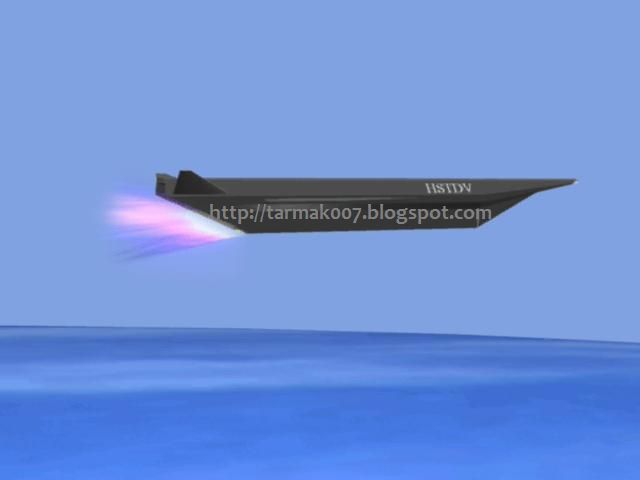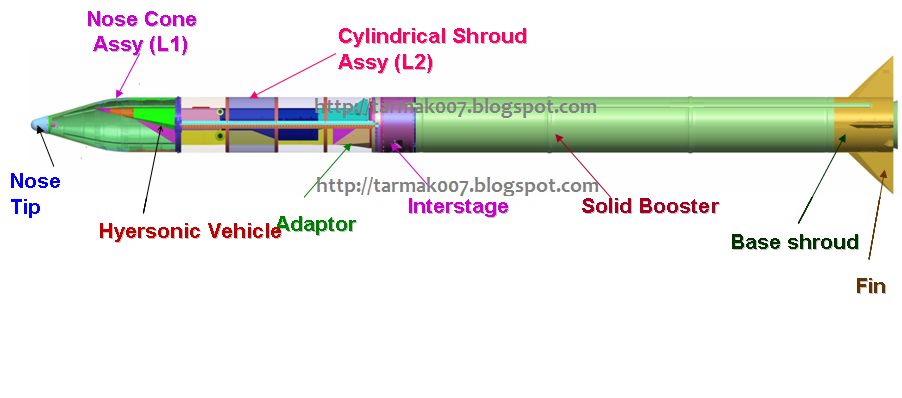praveen007
FULL MEMBER

- Joined
- Jun 10, 2010
- Messages
- 927
- Reaction score
- 0
- Country
- Location
FUTURE STRIKE:
India's hypersonic
vehicle (HSTDV)
ready for ground
tests | Stage-
separation & air-
intake wind-tunnel
experiments in Russia
.
.
Tarmak007 -- A bold blog on Indian defence: FUTURE STRIKE: India's hypersonic vehicle (HSTDV) ready for ground tests | Stage-separation & air-intake wind-tunnel experiments in Russia
++

+++

++

++

.
India's hypersonic missile dreams are slowly and steadily taking shape at the DRDL facility in Hyderabad, with the advancements of HSTDV project. Though scientists are tight-lipped about letting out
too many details at this stage,
Tarmak007 can confirm that
the project is definitely heading in the right direction with the boost it might have received after the missile brain in Dr Saraswat took over the reins of DRDO. | Photos: Tarmak007
.
.
Bangalore/Hyderabad: Forty kilometers in 20 seconds!
The time taken to eat a biscuit. Well, that's the primary mission objective scientists at the Defence Research and Development Laboratory(DRDL) in Hyderabad are aiming for, probably as a first step towards unleashing a futuristic hypersonic cruise missile. And, when Santa rings the X'Mas bell in 2014, we would have known the fate of this tech-cocktail currently being measured and mixed to perfection by a group of brainy boys of Indian defence.
The scientists have already conceptualized a Hypersonic Test Demonstration Vehicle (HSTDV)for an autonomous flight of a scramjet-integrated (combustion inside the engine occurs at 1.2 km/sec) hypersonic air-breathing vehicle for a short duration of about 20 seconds.
The scramjet-integrated vehicle is mounted on top of an already proven Agni missile booster motor and protected by aerodynamic fairings. The solid booster injects the hypersonic vehicle at the desired altitude of 32 km and Mach number of 6.5. The aerodynamic fairings are separated and the hypersonic vehicle is also separated from the booster.
After separation, the scramjet engine is ignited and the vehicle cruises for a short duration of 20 seconds.
High temperature materials are used for the engine and airframe construction.
The scramjet integrated vehicle has been designed considering the aero-propulsion interactions. The performance analysis indicates the capability of the vehicle to generate adequate positive thrust margin ensuring cruise condition. The materials have been identified, thermo-structural design completed and the airframe also fabricated. A scramjet combustor also has been designed and tested in connect pipe mode test facility at DRDL and the performance has been satisfactory, so far. A flight-worthy engine using high temperature resistant materials is under fabrication," sources said.
The first aerodynamic wind-tunnel test was held in Israel(2007) and later in Russia (2009)as India doesn't have a hypersonic facility to test larger cross-section of platforms.
"Next year some more missions are planned in Russia, including stage separation and air intake tests. We are also planning a full-scale panel-separation test at DRDL itself," sources told Express.
The scientists have already proved technologies for aerodynamics, aero-thermodynamics, engine and hot structures through design and ground testing. "Ahead of the launch, we will have to now focus on the mechanical and electrical integration, control and guidance system along with their packaging, checkout system, HILS (hardware in loop simulation) and launch readiness," sources said.
Technologies like configuration tests, combustion and full-scale cruise vehicle structural aspects have also been proved taking the project past the half-way mark.
India is the second country to have planned an autonomous flight of the hypersonic air-breathing vehicle; the first being the USA which demonstrated the flight through X-43 and X-51 programs. France is also planning the autonomous flight sometime in 2015 through LEA program.
The HSTDV project directorate was formed in 2005. It is now confirmed that technology for a 600-second test to cover a range of 1,500 km range is also taking shape to establish future strike technologies against hardened and time-critical targets.

++

++

.
.
Go India Go
India's hypersonic
vehicle (HSTDV)
ready for ground
tests | Stage-
separation & air-
intake wind-tunnel
experiments in Russia
.
.
Tarmak007 -- A bold blog on Indian defence: FUTURE STRIKE: India's hypersonic vehicle (HSTDV) ready for ground tests | Stage-separation & air-intake wind-tunnel experiments in Russia
++

+++

++

++

.
India's hypersonic missile dreams are slowly and steadily taking shape at the DRDL facility in Hyderabad, with the advancements of HSTDV project. Though scientists are tight-lipped about letting out
too many details at this stage,
Tarmak007 can confirm that
the project is definitely heading in the right direction with the boost it might have received after the missile brain in Dr Saraswat took over the reins of DRDO. | Photos: Tarmak007
.
.
Bangalore/Hyderabad: Forty kilometers in 20 seconds!
The time taken to eat a biscuit. Well, that's the primary mission objective scientists at the Defence Research and Development Laboratory(DRDL) in Hyderabad are aiming for, probably as a first step towards unleashing a futuristic hypersonic cruise missile. And, when Santa rings the X'Mas bell in 2014, we would have known the fate of this tech-cocktail currently being measured and mixed to perfection by a group of brainy boys of Indian defence.
The scientists have already conceptualized a Hypersonic Test Demonstration Vehicle (HSTDV)for an autonomous flight of a scramjet-integrated (combustion inside the engine occurs at 1.2 km/sec) hypersonic air-breathing vehicle for a short duration of about 20 seconds.
The scramjet-integrated vehicle is mounted on top of an already proven Agni missile booster motor and protected by aerodynamic fairings. The solid booster injects the hypersonic vehicle at the desired altitude of 32 km and Mach number of 6.5. The aerodynamic fairings are separated and the hypersonic vehicle is also separated from the booster.
After separation, the scramjet engine is ignited and the vehicle cruises for a short duration of 20 seconds.
High temperature materials are used for the engine and airframe construction.
The scramjet integrated vehicle has been designed considering the aero-propulsion interactions. The performance analysis indicates the capability of the vehicle to generate adequate positive thrust margin ensuring cruise condition. The materials have been identified, thermo-structural design completed and the airframe also fabricated. A scramjet combustor also has been designed and tested in connect pipe mode test facility at DRDL and the performance has been satisfactory, so far. A flight-worthy engine using high temperature resistant materials is under fabrication," sources said.
The first aerodynamic wind-tunnel test was held in Israel(2007) and later in Russia (2009)as India doesn't have a hypersonic facility to test larger cross-section of platforms.
"Next year some more missions are planned in Russia, including stage separation and air intake tests. We are also planning a full-scale panel-separation test at DRDL itself," sources told Express.
The scientists have already proved technologies for aerodynamics, aero-thermodynamics, engine and hot structures through design and ground testing. "Ahead of the launch, we will have to now focus on the mechanical and electrical integration, control and guidance system along with their packaging, checkout system, HILS (hardware in loop simulation) and launch readiness," sources said.
Technologies like configuration tests, combustion and full-scale cruise vehicle structural aspects have also been proved taking the project past the half-way mark.
India is the second country to have planned an autonomous flight of the hypersonic air-breathing vehicle; the first being the USA which demonstrated the flight through X-43 and X-51 programs. France is also planning the autonomous flight sometime in 2015 through LEA program.
The HSTDV project directorate was formed in 2005. It is now confirmed that technology for a 600-second test to cover a range of 1,500 km range is also taking shape to establish future strike technologies against hardened and time-critical targets.

++

++

.
.
Go India Go





 buddy it is still not operational.......
buddy it is still not operational.......




